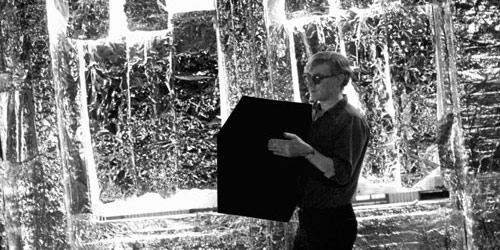In album: Andy-Warhol's (Blue Blotch) Early 1960's Andy Warhol Painting's- "A Gold Marilyn Comparable Background. "EVIDENCE RESEARCH WEBSITE" Viewing Only
Michael P. Wilson dexxxaa@gmail.com (760) 366-2927 (760) 668-1448 Andy Warhol painting "The Gold Thinker" Abstract Brillo Box? Light Box?
Modern Myths: Andy Warhol (I'll Be Your Mirror: The Selected Andy Warhol Interviews 1962-1987).
Barry Blinderman: As a portraitist, what do you feel is most important to express?
Andy Warhol: I always try to make the person look good. It’s easier if you give somebody something back that looks like them. Otherwise, if I were more imaginative, it wouldn’t look like the person.
BB: How many shots do you take for each portrait? Do you take them all yourself?
AW: Yes, I take them all. Usually about 10 rolls, about 100 shots.
BB: Do you still use the SX-70?
AW: No, I use the “Big Shot†now.
BB: What’s been the general response to the portraits from the people who commissioned them?
AW: The Polaroids are really great because the people can choose the photo they want. That makes it easier. And this camera also dissolves the wrinkles and imperfections.
BB: Polaroid is like color TV in a way. It has its own idea about what blue is or what red is. It’s a very subjective color that seems like it was custom made for your art.
AW: Yes, it seemed to be. But it’s hard to do whole bodies with it. I haven’t learned to take whole bodies with it yet. I do have a camera that can take whole bodies though.
BB: The camera has been an essential part of your art for so long. I saw some early Campbell’s soup can drawings at a Guggenheim drawing show some years ago. How did you do those drawings? Were they projected onto the paper?
AW: Yes. They were photographs that I projected and traced onto the paper. I used both slides and opaque projectors in those days. I also used a light box.
Modern Myths: Andy Warhol
Reacties
 Reactie toevoegen
Reactie toevoegen
Log in om een reactie te plaatsen!



